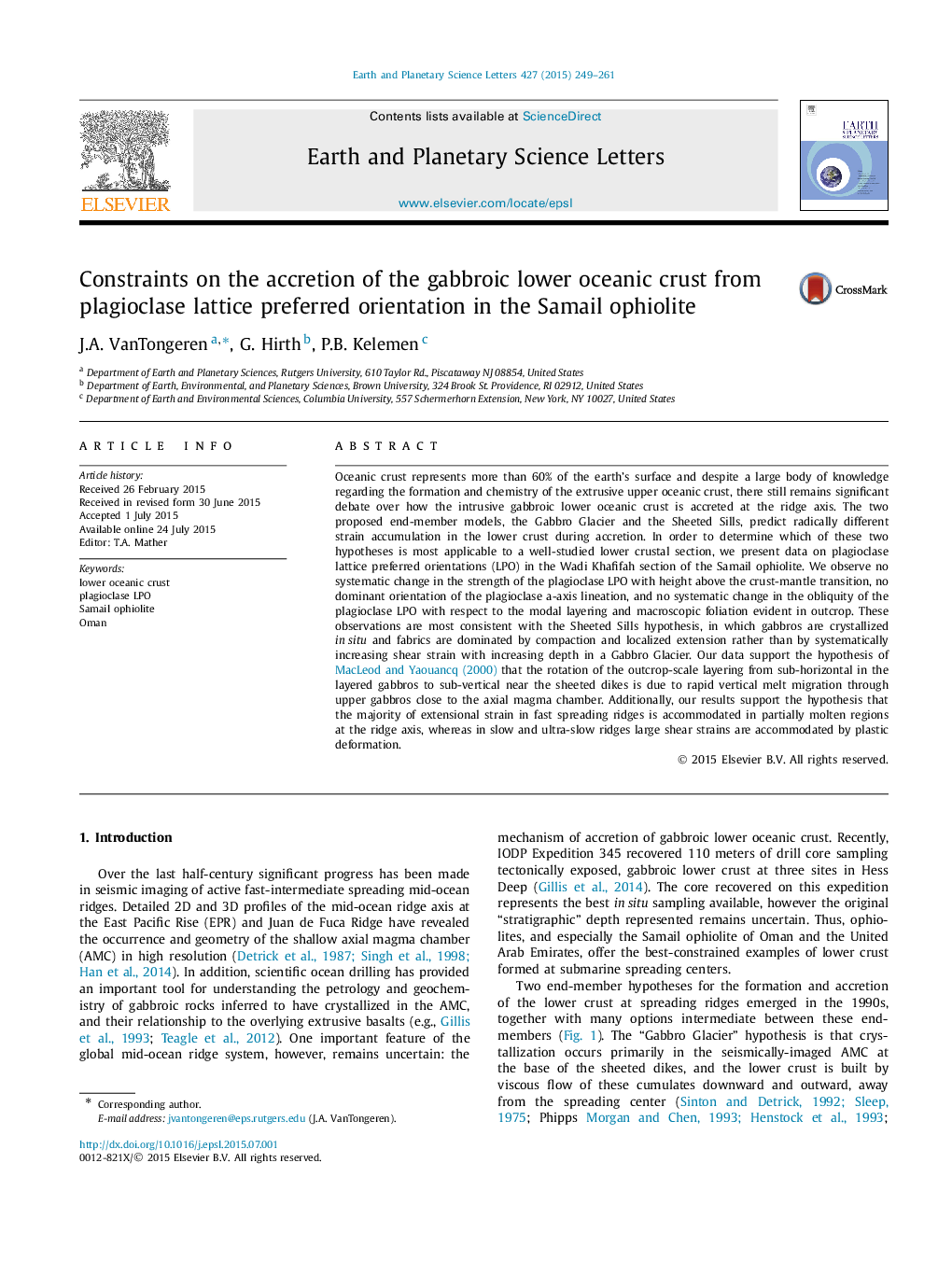| Article ID | Journal | Published Year | Pages | File Type |
|---|---|---|---|---|
| 6428096 | Earth and Planetary Science Letters | 2015 | 13 Pages |
â¢There is no change in any metric of plagioclase fabric with stratigraphic depth.â¢Our data rule out the Gabbro Glacier model for lower crustal accretion.â¢Our data are consistent with the Sheeted Sills model for lower crustal accretion.â¢We provide five criteria for any model of the lower oceanic crust accretion.
Oceanic crust represents more than 60% of the earth's surface and despite a large body of knowledge regarding the formation and chemistry of the extrusive upper oceanic crust, there still remains significant debate over how the intrusive gabbroic lower oceanic crust is accreted at the ridge axis. The two proposed end-member models, the Gabbro Glacier and the Sheeted Sills, predict radically different strain accumulation in the lower crust during accretion. In order to determine which of these two hypotheses is most applicable to a well-studied lower crustal section, we present data on plagioclase lattice preferred orientations (LPO) in the Wadi Khafifah section of the Samail ophiolite. We observe no systematic change in the strength of the plagioclase LPO with height above the crust-mantle transition, no dominant orientation of the plagioclase a-axis lineation, and no systematic change in the obliquity of the plagioclase LPO with respect to the modal layering and macroscopic foliation evident in outcrop. These observations are most consistent with the Sheeted Sills hypothesis, in which gabbros are crystallized in situ and fabrics are dominated by compaction and localized extension rather than by systematically increasing shear strain with increasing depth in a Gabbro Glacier. Our data support the hypothesis of MacLeod and Yaouancq (2000) that the rotation of the outcrop-scale layering from sub-horizontal in the layered gabbros to sub-vertical near the sheeted dikes is due to rapid vertical melt migration through upper gabbros close to the axial magma chamber. Additionally, our results support the hypothesis that the majority of extensional strain in fast spreading ridges is accommodated in partially molten regions at the ridge axis, whereas in slow and ultra-slow ridges large shear strains are accommodated by plastic deformation.
